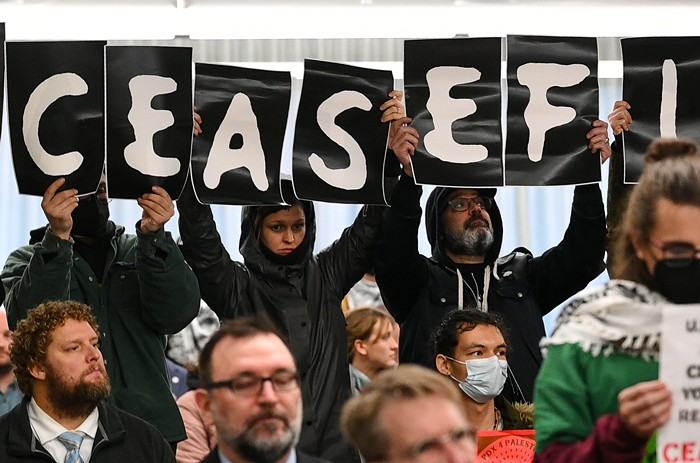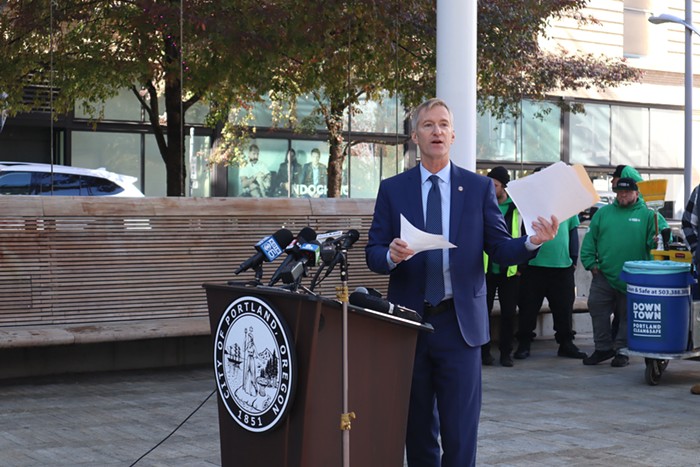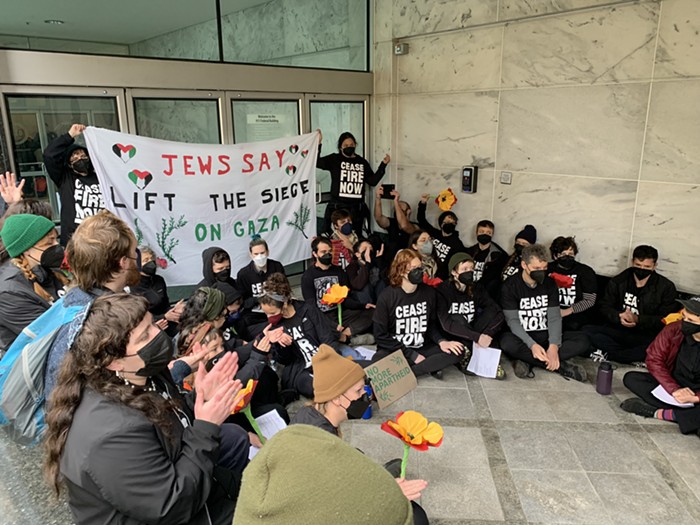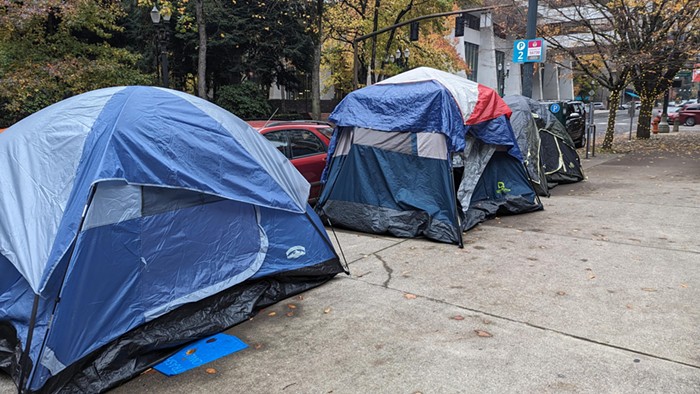
The Oregon Health and Science University (OHSU) failed to uphold values of diversity, equity, and inclusion, and community members believe the university inconsistently responds to reports of misconduct, an investigation into the university’s institutional culture found.
The outside investigation, commissioned by OHSU, was released Thursday by Covington & Burling LLP, a law firm based in Washington, DC. OHSU retained the lawyer group to complete the report after a series of internal concerns related to gender and racial discrimination were brought to leaders’ attention, as well as a recent lawsuit against OHSU for how it handled allegations of misconduct amongst staff.
The investigation spanned eight months and included input from 300 interviews with current and former staff, as well as online focus groups including nearly 700 anonymous attendees from the OHSU community.
The report identified five key issues with OHSU’s internal culture. Per the report:
- OHSU’s actions and communications with respect to DEI [diversity, equity, and inclusion], misconduct, and Human Resources (“HR”) issues are sometimes misaligned with its stated values.
- OHSU has not established clear DEI priorities, an institution-wide strategy to drive change, or policies that effectively address DEI.
- OHSU’s policies and procedures addressing misconduct and reporting are inconsistent and lack clarity and precision.
- OHSU lacks a consistent process for addressing and documenting concerns about misconduct, resulting in employee dissatisfaction and disciplinary outcomes that are not always fully informed or effectively implemented.
- OHSU has historically devalued and marginalized the HR function through its failure to provide it with sufficient resources, experienced leadership, or adequate authority.
Those five issues were gleaned from the extensive interviews with staff and students, anonymous reports via the investigation’s hotline, and reviews of misconduct cases.
According to the Covington report, while sixty percent of the focus group participants believe OHSU treats its patients with dignity and respect, only 30 percent believe the university treats its employees the same way. Additionally, less than half of the participants agreed that OHSU treats workforce members fairly regardless of race, color, religion, disability, age, sex, sexual orientation, pregnancy status, or other “protected characteristics.” To underscore that point, two-thirds of the focus groups reported witnessing or experiencing differential treatment based on protected characteristics and 41 percent reported experiencing or witnessing sexual misconduct at OHSU within the last three years. The focus group reports were reinforced by the hundreds of reports of sexual and gender harassment, bullying, and racial discrimination reported to the investigation hotline.
A common theme the investigation unearthed was OHSU staff and students being unsatisfied with the way their complaints of misconduct were handled when reported to the university. The handling of the complaints was unclear to people who reported them, internal investigations took longer than expected, and reports of misconduct were commonly responded to with suspicion and doubt. In one case, a manager reported sexual harassment to the university’s Affirmative Action and Equal Opportunity department (AAEO) and was then asked about what she was wearing at the time of the harassment, as if to question whether she brought the harassment upon herself.
“I have made reports in the past that were not taken seriously and I was forced into a meeting where I was told I was imagining the problem,” one focus group participant said.
Covington’s report attributes part of the mishandling of complaints to the struce of OHSU’s human resources department and the organization’s vague reporting policy.
In 2009, OHSU decided each university department should fund its own human resources position—the report implies this restructuring was partly in response to the 2008 recession. The human resources employees were then overseen by and reported to their department administrator instead of the central human resources department. According to the investigation, this decentralization caused inconsistent training and poor adherence to human resources actions. OHSU started to reincorporate the department human resources positions into the central department in 2017, but, as of October 2021, 13 of the university’s 18 human resources employees remained unincorporated.
Additionally, each human resources employee is responsible for 1,100 to 1,400 employees, a caseload that they describe as “untenable.” The average number of employees assigned to an human resources representative in workplaces nationally, according to the report, is 207.
Investigators also found that OHSU’s reporting guidelines were unclear, particularly when it comes to who is actually considered a “mandatory reporter” when allegations arise and the chain of communication when a report is made.
"I have made reports in the past that were not taken seriously and I was forced into a meeting where I was told I was imagining the problem."
In one case, 11 OHSU employees—five of whom held supervisor roles—were aware of allegations of sexual misconduct made against Jason Campbell, a former anesthesiology resident, by several employees but did not report it to human resources. According to OHSU’s current reporting policy, only one of those employees—Campbell’s direct supervisor—violated the university’s reporting policy by not further reporting the misconduct. According to human resources employees, the reporting policy is intended to require all OHSU supervisors to report misconduct, but lack of clarity and awareness of the policy causes oversights in reporting. According to the supervisors who failed to report the harassment allegations, they believed the victims were going to report the allegations themselves and that “they were being told as a ‘friend,’” not as an OHSU employee, about “‘off-campus’ conduct.”
The inconsistency amongst HR has contributed to employees’ mistrust in the university’s handling of misconduct complaints. According to the report, OHSU staff and students feel there are far more risks to reporting misconduct than benefits, with only 28 percent of focus group participants who indicated experiencing misconduct actually reporting it to OHSU. Those who decide not to report misconduct cited fear of backlash and retaliation. Participants who did report misconduct shared experiences of being given undesirable projects and being shunned from important meetings. A 2018 study revealed that Black and disabled OHSU members were even less likely to report instances of discrimination and harassment, with 38 and 33 percent respectively indicating they would report misconduct in comparison to 50 percent of the total OHSU community.
“The process tends to only make things worse for the reporter,” one participant cited in the Covington report said. “It would be career damaging and wouldn’t prevent anything similar from happening again or to others.”
Interviews with OHSU members also revealed a mistrust in the sincerity of OHSU’s stated values of diversity, equity, and inclusion. While the organization has declared a commitment to anti-racism, it has also failed to address four incidents over the past five years in which nooses have been displayed in employee break rooms, research buildings, and online spaces. In August 2020, OHSU’s Black Employee Resource Group (BERG) wrote to the university’s executives, decrying the university’s lack of action against perpetrators of these racist incidents.
OHSU responded to media inquiries about BERG’s letter before responding to the group directly.
Members of the university’s own Center for Diversity and Inclusion team call OHSU’s anti-racism plan “hodgepodge,” stating that employees “should know… what our five-year goals are, but we don’t.”
The report makes 12 recommendations and 40 sub-recommendations for OHSU to begin to solve its misconduct reporting and culture issues. The recommendations are grouped into three categories—addressing workplace culture from the top down through policy, increasing resources and staffing for HR, and establishing clearer policies and procedures for handling misconduct. Some of the recommendations include conducting regular employee engagement surveys to inform equity and community goals, centralizing HR structure, and revising OHSU’s misconduct reporting process. The report also recommends OHSU create an oversight committee to oversee the implementation of the recommendations.
“While many of the cultural challenges identified in this report are concerning, they can serve as a catalyst for significant transformation of OHSU’s institutional culture,” the report states. “Guided by this report’s findings and recommendations, OHSU has the opportunity to create a culture where all community members can thrive.”
Eric Holder, former US General Attorney and lead investigator for the report, praised OHSU for its “courage” for requesting the investigation and cooperation throughout the process.
OHSU shared the final investigation with the public immediately after receiving it. OHSU executives received a briefing of the report prior to receiving the written document.
“It is clear from our briefing that we have a significant amount of work to do (in addition to efforts currently underway) to overcome the past and change the future so that OHSU can become a place where everyone can thrive,” OHSU President Danny Jacobs said in a statement. “Covington’s findings show how challenging the work environment has been for some OHSU members and let us be clear: just one person experiencing inequitable treatment, discrimination, harassment, bullying, intimidation or retaliation is one too many. We cannot achieve our full potential as an institution or our duties and responsibilities until we have an environment where every member feels valued and can thrive.”
According to AFSCME Local 328, the union that represents nearly 7,000 OHSU staff, community members have been trying to draw attention to issues covered in the report for years.
“This report is damning and it validates what our members, our activists, our stewards and our staff have been saying for years: There are serious problems at OHSU,” read a post on the union’s Facebook page Thursday afternoon.



















